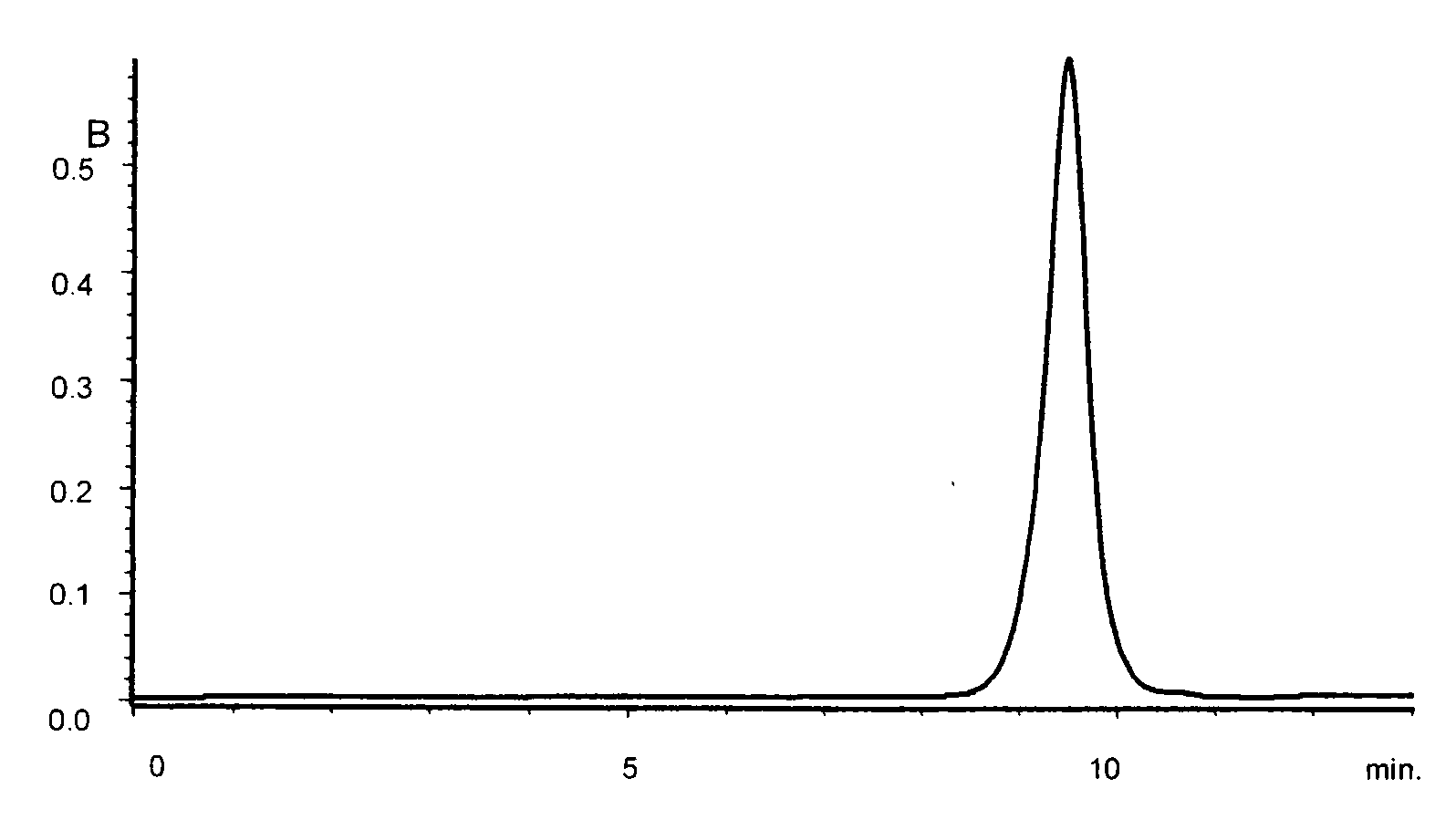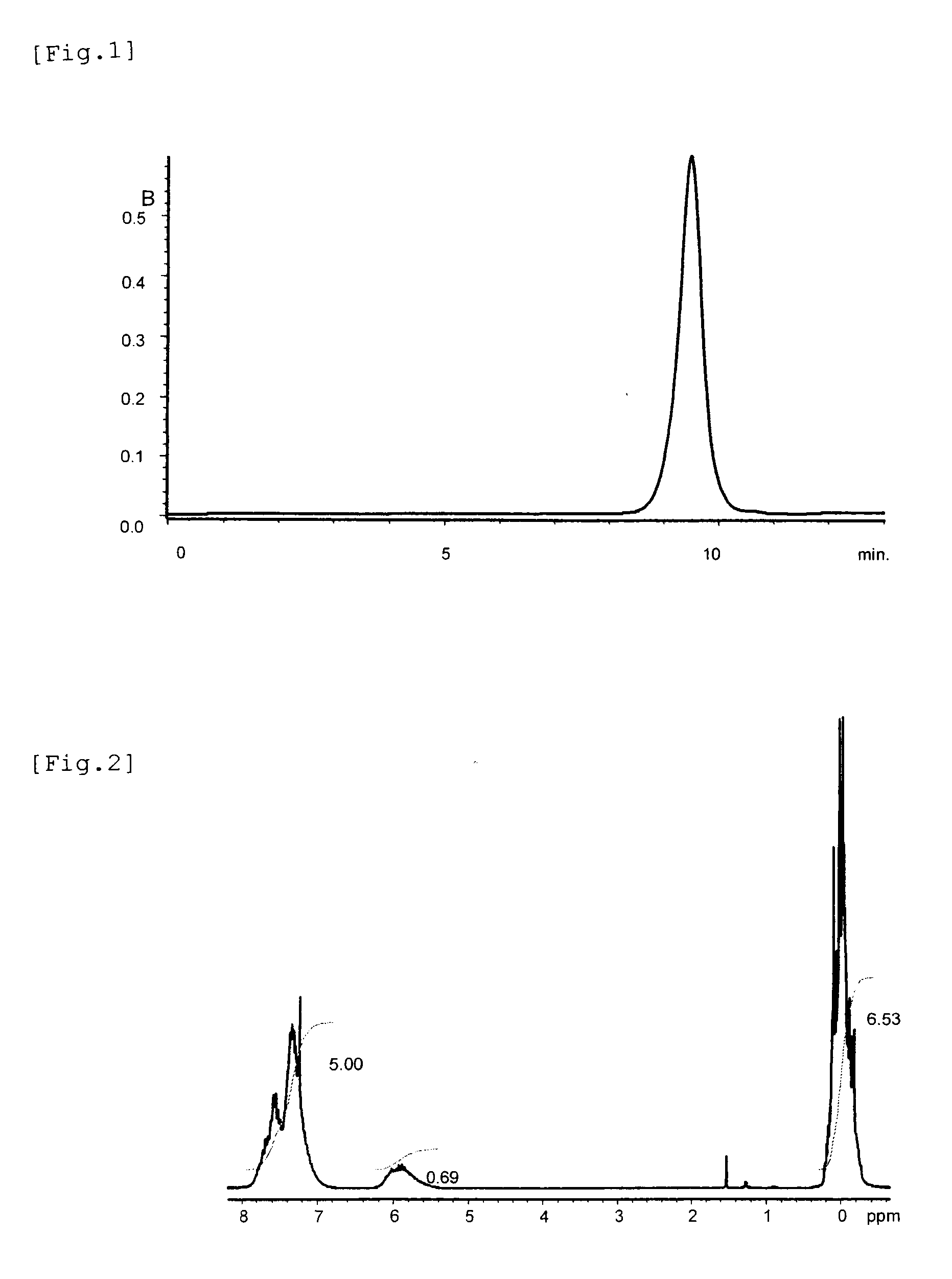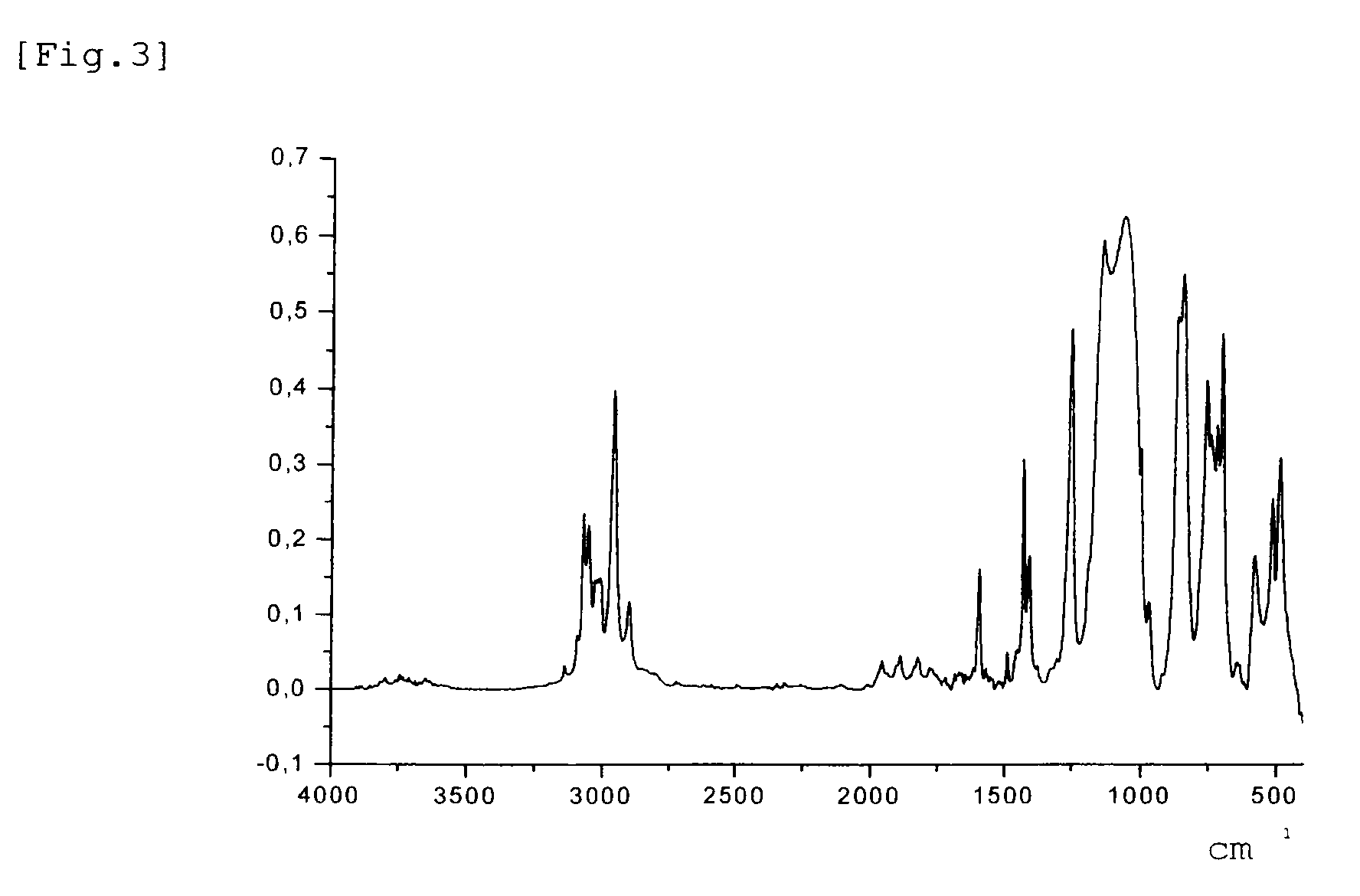Curable resin composition
- Summary
- Abstract
- Description
- Claims
- Application Information
AI Technical Summary
Benefits of technology
Problems solved by technology
Method used
Image
Examples
example 1
[0093]65.4 g (0.33 mole) of phenyltrimethoxysilane, 24.3 g (0.10 mole) of diphenyldimethoxysilane, 30.2 g (0.29 mole) of trimethylmethoxysilane, 41.5 g (0.28 mole) of vinyltrimethoxysilane and 300 ml of acetic acid were charged and polymerized at 80° C. for 10 hours. Then, 300 ml of toluene was added to obtain a toluene solution containing a polyorganosiloxane mixture. The solution was washed 5 times with 300 ml water each time. Thereafter, toluene was removed by distillation under a reduced pressure to obtain a polyorganosiloxane having the average compositional proportion corresponding to the following formula.
[0094]The polyorganosiloxane was named as “Resin 1”. The digit at the right side of each structural unit shows a respective molar proportion.
((CH3)3SiO1 / 2)0.29, (Ph2SiO2 / 2)0.10, (CH═CH2SiO3 / 2)0.28, (PhSiO3 / 2)0.33.
[0095]The GPC curve for the obtained polyorganosiloxane is shown in FIG. 1.
example 2
[0096]77.3 g (0.39 mole) of phenyltrimethoxysilane, 26.7 g (0.11 mole) of diphenyldimethoxysilane, 35.4 g (0.34 mole) of trimethylmethoxysilane, 23.7 g (0.16 mole) of vinyltrimethoxysilane and 300 ml of acetic acid were charged and polymerized at 80° C. for 10 hours. Then, 300 ml of toluene was added to obtain a toluene solution containing a polyorganosiloxane mixture. The solution was washed 5 times with 300 ml water each time. Thereafter, toluene was removed by distillation under a reduced pressure to obtain a polyorganosiloxane having the average compositional proportion corresponding to the following formula. The polyorganosiloxane was named as “Resin 2”. The digit at the right side of each structural unit shows a respective molar proportion.
((CH3)3SiO1 / 2)0.34, (Ph2SiO2 / 2)0.11, (CH═CH2SiO3 / 2)0.16° (PhSiO3 / 2)0.39
example 3
[0097]79.3 g (0.40 mole) of phenyltrimethoxysilane, 36.4 g (0.15 mole) of diphenyldimethoxysilane, 26.0 g (0.25 mole) of trimethylmethoxysilane, 22.2 g (0.15 mole) of vinyltrimethoxysilane, 6.6 g (0.05 mole) of vinylmethyldimethoxysilane, 1 ml of acetyl chloride and 300 ml of acetic acid were charged and polymerized at 80° C. for 10 hours to obtain a polyorganosiloxane mixture. Then, 300 ml of toluene was added to the polyorganosiloxane mixture to obtain a toluene solution.
[0098]The toluene solution was washed 5 times with 300 ml water each time. The toluene solution was dried using anhydrous sodium sulfate, followed by removing the anhydrous sodium sulfate by filtration.
[0099]Then, 48.4 g (0.30 mole) of hexamethyldisilazane was added to the toluene solution, followed by refluxing for 8 hours to cap silanol groups. Obtained solution was washed 5 times with 300 ml of water each time, followed by removing toluene by distillation under a reduced pressure to obtain a polyorganosiloxane ...
PUM
| Property | Measurement | Unit |
|---|---|---|
| Temperature | aaaaa | aaaaa |
| Transmittivity | aaaaa | aaaaa |
| Composition | aaaaa | aaaaa |
Abstract
Description
Claims
Application Information
 Login to View More
Login to View More - R&D
- Intellectual Property
- Life Sciences
- Materials
- Tech Scout
- Unparalleled Data Quality
- Higher Quality Content
- 60% Fewer Hallucinations
Browse by: Latest US Patents, China's latest patents, Technical Efficacy Thesaurus, Application Domain, Technology Topic, Popular Technical Reports.
© 2025 PatSnap. All rights reserved.Legal|Privacy policy|Modern Slavery Act Transparency Statement|Sitemap|About US| Contact US: help@patsnap.com



